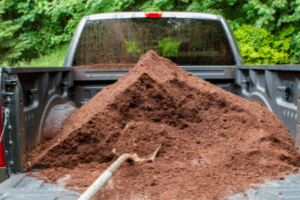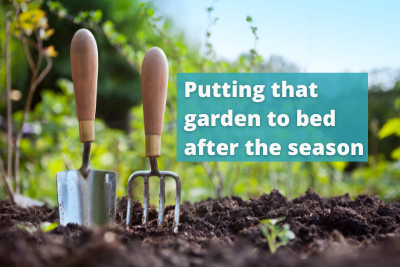As the garden you finally planted is now up and growing, you likely will find yourself outside in the heat and blazing sunshine, asking yourself whether the fall temperatures will ever get here. And you may be asking yourself how to set up your flower bed and fruit and vegetable plants for survival into next season.
Experts say the key to a flourishing garden bed — assuming you picked a proper spot and layout, planted good, disease-resistant seeds and chose a variety of plants suitable for your soil, which you diligently cultivated — is sticking to a disciplined watering and weeding regimen, as well as focusing intently on controlling disease-carrying pests.
Here’s a quick checklist:
At this time of year, one of your priority items is WATERING your garden bed properly to produce the most vibrant flowers and shrubs, and highest-yield crops.
Your irrigation schedule will depend on the weather. If it rains less than one inch or not at all: water your plants at least once a week. Fruit plants especially need water for highest yield and best quality.
Test the soil: it is getting enough water if you feel moisture six inches into the soil.
A note about new gardens that have not yet established: these beds should get water daily for around 25 minutes.
Inspect your garden regularly and be on the lookout for weeds. You will want to be aggressive with WEED CONTROL because weeds not only rob your plants of much-needed nutrients and moisture, they also promote disease and make homes for pesky insects that can damage your crops.
Pull weeds by hand or use a garden hoe as soon as you see them on the surface. Be careful not to disturb tender vegetable roots. You’ll do well with weed control simply by cultivating soil just below the surface, especially near plants and vegetables.
Try to avoid using weed control sprays, especially if you have a variety of vegetable plants because they vary in tolerance to chemicals in sprays. If weeds grow beyond your control, consult an independent landscape expert for advice on the best strategy to remove them.
 A protective 2-3” layer of organic mulch can help keep weeds from growing and spreading.
A protective 2-3” layer of organic mulch can help keep weeds from growing and spreading.
If you find PESTS and INSECTS, take a photo of them as well as any visual evidence of damage and show it to a landscape expert to identify the bugs so you will have a good plan for attacking them.
Same goes for DISEASES. If plant leaves unexpectedly change color or die, take a pic with your phone and show it to a landscape expert for advice on how to treat it.
More BEST PRACTICES:
If you’ve chosen a good spot for your garden, the soil should drain well. If you find standing water after rain storms or irrigation cycles, address the drainage problem immediately. Standing water invites diseases and pests.
Gently prune dead or diseased plant leaves. Don’t forget to wash the tools you use so you don’t inadvertently spread disease to healthy plants.
Keep soil as rich and healthy as possible by rotating crops from one location to another from one year to the next.
Routine and consistent maintenance will make a garden bed. It will produce abundant flowers, bursting with colors, and high-quality fruits and vegetables to harvest year after year.
Your local independent lawn and landscape dealer can give you advice about your garden. To find an expert near you, click here.

